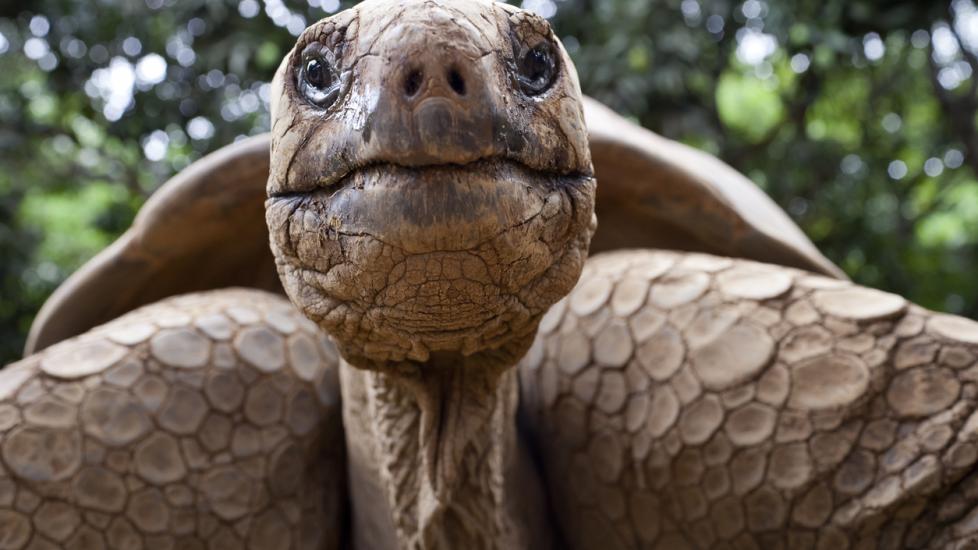How Long Do Turtles and Tortoises Live?
iStock/maikid
Both turtles and tortoises are some of the longest-living species that can be kept as a pet. But exactly how long do turtles live? And how long do tortoises live?
Keeping a turtle or tortoise as a pet requires a considerable time commitment in order to provide appropriate care throughout their life. But with this care and commitment, they can truly be lifelong companions.
Key Takeaways
- Turtles and tortoises can live anywhere from 15 to over 150 years, depending on the species.
- Appropriate care is crucial to helping your turtle or tortoise live a long life.
- Do your research before taking home a pet turtle or tortoise. They can live a long time and can be difficult to care for.
How Long Do Turtles Live?
Aquatic turtles will commonly live 20–30 years as pets, but many can live much longer.
| Box turtle | 20–50 years |
| Red-eared slider | 15–30 years |
| Map turtle | 15–25 years |
| Painted turtle | 25–50 years |
| Spiny softshell turtle | up to 50 years |
| Alligator snapping turtle | 20–70 years |
| Mud turtle | 10–15 years |
| Mata Mata turtle | 40–75 years |
| Reeves turtle | up to 20 years |
| Spotted turtle | over 100 years possible |
How Long Do Tortoises Live?
Tortoises are more well-known for their longevity—with some estimated to live 100–150 years.
| Leopard tortoise | 100 years or more |
| Greek tortoise | 100 years or more |
| Hermann's tortoise | 70–100 years |
| Sulcata tortoise | 30–50 years, with some up to 120 years |
| Horsfield's (Russian) tortoise | 50–100 years |
| Mediterranean tortoise | 50–100 years |
| Egyptian tortoise | 70–100 years |
| Red footed tortoise | 25–50 years |
What Factors Affect a Turtle or Tortoise’s Lifespan?
The average lifespan of a turtle or tortoise is highly dependent on the species. Some species may only live 10–20 years in captivity, while the maximum lifespan of a tortoise can reach 150 years.
In general, most turtle and tortoise species can live well into their 50s if provided appropriate care. You may even need to add these pets to your will!
Most turtles and tortoises should ideally live much longer in captivity than in the wild. In the wild, they must find their own food in addition to evading predators. They also lack routine veterinary care.
Research each species and work closely with a reptile veterinarian to meet your pet turtle or tortoise’s specific needs.
How To Improve Your Turtle or Tortoise’s Lifespan
Larger species of turtles and tortoises usually outlive their smaller counterparts. However, even smaller turtles can live 15–25 years and are considered a long-term commitment for pet parents.
Genetics can play a role in turtle and tortoise longevity, since they can have cancer and other diseases that shorten their lifespan.
Ensure Proper Everyday Care
Improper care is very likely to cause problems with pet turtles and tortoises. Each species has specific needs, such as:
-
Diet
-
Temperature and humidity
-
Water quality
-
Vitamin supplementation
-
UV light exposure
-
Housing size
-
Enrichment
Choose a Turtle or Tortoise Best Suited for Your Environment
When researching different species, you’ll notice these pets come from a variety of environments. Some animals are true desert creatures, others are found in humid zones, and some live their entire life in water.
These differences can help direct pet parents toward a pet best suited for their living situation. For example, desert tortoises such as the Sulcata may do well living outside in hot areas of the country, like the Southwest, but they would require an indoor habitat in the Midwest.
Look Out for Illnesses and Injuries
Turtles and tortoises in captivity often succumb to care-related illnesses. They frequently have vitamin A and calcium deficiencies due to poor diet and improper lighting. Additionally, they can easily acquire abscesses and parasites in captivity, in addition to viral and bacterial infections. In addition, these animals can develop overgrown beaks if not cared for properly.
Pet turtles and tortoises are also frequent victims of shell damage—most often because of a bite from the family dog. It’s imperative to separate your turtle or tortoise from dogs or cats that could attack them, as well as quarantining any new reptiles to prevent spread of disease.
Check in on your shelled friend daily to look for signs of any illness or injury. Remember to wash your hands before and after handling your pet, as tortoises and turtles can carry Salmonella.
Always contact your reptile veterinarian if there is a problem with your pet turtle or tortoise.
References
-
LafeberVet. Lafeber Vet Turtles & Tortoises Information Sheets.
-
Morris P. Chelonia.org. Basic Care - Water Turtles. 2005.
-
Morris P. Chelonia.org. Basic Tortoise Care. 2003.
-
Shannon RW, Horton S. Exoticpetvet.com. General Care of Aquatic Turtles.
-
De Vosjoli P. Exoticpetvet.com. General Tortoise Husbandry.
